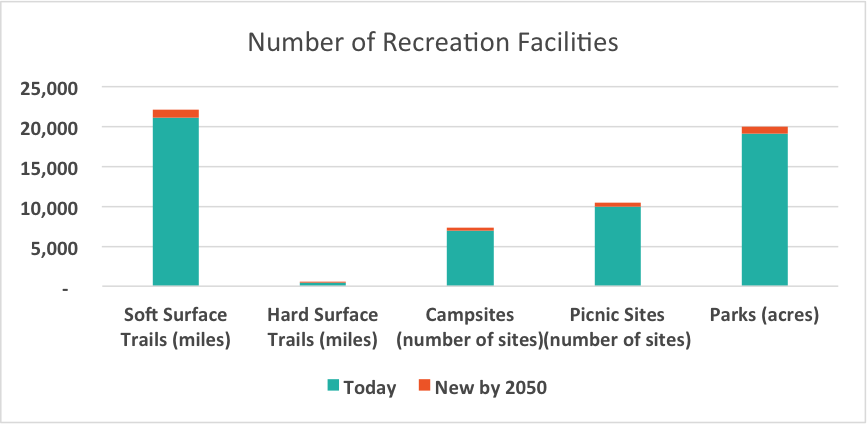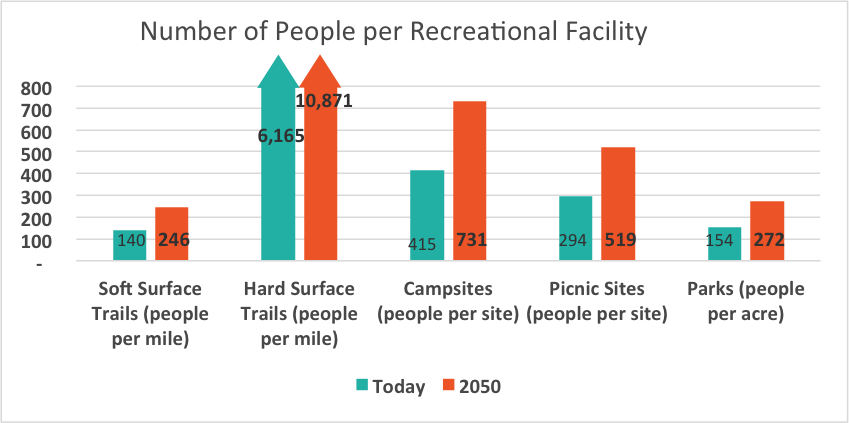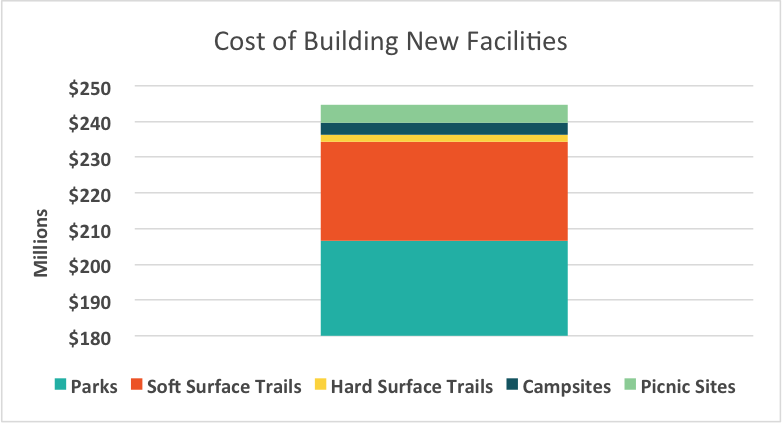The Story
Utah builds very few new outdoor recreational facilities (parks, trails, campgrounds, picnic sites, etc.). As Utah’s population nearly doubles and demand for recreation increases, we do not create or implement a long-range strategy to develop or maintain recreational areas. As a result, facilities are crowded, overused, and rundown. As population grows westward along the Wasatch Front, no new facilities are built in the mountains on the west sides of the Wasatch Front counties.
Results
- Cost per household for new recreational facilities is $140 spread over 35 years, paid from federal, state, and local governments; developers; and users.
- Big and Little Cottonwood, American Fork, Provo, and other east-side canyons are heavily used.
- Tension and conflict increase between user groups.
- Utahns’ health declines due to lack of recreational access.
- Fewer tourists, employees, and employers are drawn to Utah.



Background
Outdoor recreation is vital to a high quality of life and strong economy in Utah. The lives and health of Utahns are improved as they visit parks and trails close to their homes, go on excursions to nearby canyons and wild areas, and travel to national and state parks and other outdoor destinations. Our outdoor recreation and the quality of life it provides attract many employees, businesses, and tourists to Utah, helping improve and grow the state’s economy. Recreation and tourism in Utah account for:
- 6.3 million visits to national parks each year.
- 3.8 million visits by skiers each year.
- 124,000 jobs.
- $6.9 billion in revenue each year.
As Utah’s population increases in the coming decades, our recreational resources will be used more than ever before. If we do not invest in new recreational facilities (parks, trails, campgrounds, picnic areas, etc.), access to recreation will decrease and our ability to enjoy the outdoors will diminish. However, a long-range strategy to develop and maintain Utah’s many different recreational facilities could improve our ability to access and enjoy outdoor recreation.
Utah’s population will nearly double by 2050, and if we are to meet growing demand we will need to invest in creating new recreational facilities. Doubling the miles of Utah’s soft surface trails would cost $560 million; doubling hard surface trails, $38 million; doubling campgrounds, $71 million; and doubling picnic areas, $100 million. Doubling the acreage of city and local parks would cost $4.1 billion—far more expensive than doubling all the other recreational facilities combined. A substantial portion of this cost may be covered by city and county park impact fees, which are paid by developers and passed on to purchasers of new homes. In addition, there are a variety of revenue sources that could be used to pay for the improvements, ranging from impact fees and federal funds to user fees.


